Livi Medication Dispenser : Review
By: Editorial Team | Posted: January 16, 2020 | Updated: April 25, 2023
The Basics
- Product: Livi
- Company: PharmRight
- Review Date: Q1 2020
Where to buy it or learn more*:
Discount for Tech-enhanced Life readers:
- Discount code:
- Discount amount:
Analyst Summary: PharmRight | Livi
The Livi Pill Dispenser is designed to help you improve your adherence to the medication regimen prescribed by your healthcare providers. It does that by helping to organize your medication; remind you which pills to take and when to take them; and helping you to refill your prescriptions when you need to.
The big advantage of this product, and others in the family of “robot pill organizer / dispensers“, is that they do the work of organizing your pills into different dose groupings for you. There is no longer any need to painstakingly sort pills into different sections of a pill box according to when they need to be taken.
This product was included in a comparative analysis of the entire class of automatic pill dispensers. If you are not sure yet whether this product is the one you need, that comparative evaluation should help you understand which pill dispenser will work best for your life situation.
Which Medications Can It Handle?
Here is what the Livi website says:
“Does Livi handle all pill shapes and sizes? Are there any kinds of pills it can’t dispense?
Livi was designed to accommodate a wide variety of pills shapes and sizes.However, Livi may have difficulty dispensing half-tabs, gummy supplements, rubbery gels, and pills that are inconsistently shaped. We recommend using the reminder feature or asking physicians or pharmacists to accommodate different strengths and medication formats as an alternative.
How does Livi handle medications that aren’t pills, like liquids, ointments, inhalers or other med types?
Livi can remind your loved one when it’s time to take medications that are stored externally. The Livi dispense button will glow green, and when it’s time to take these meds, a reminder with the med name and instructions will be displayed.”
User Interface (UI)
One of the common scenarios in which these types of products will be used involve two different people. One, which we call the “dispensee”, is the person who consumes the medication, and who needs to interface with the machine when it is time for the medications to be dispensed.
The second, which we call the “filler”, is the person who worries about putting the right medication into the system every week or month, and who sets up the “dispensing schedule” according to whatever schedule has been prescribed by the physicians of the dispensee.
In many scenarios, the filler will be a caregiver, or spouse, or adult child of the dispensee. However there will also be situations in which the dispensee also performs the job of the filler (i.e. when you worry about your own medication management instead of involving someone else).
The primary user interface for this product is via a screen on the front of the product, and a series of buttons which you use to toggle through choices on the screen (it is NOT a touchscreen). The system gets your attention with lights and sounds and various types of notifications (eg text messages).
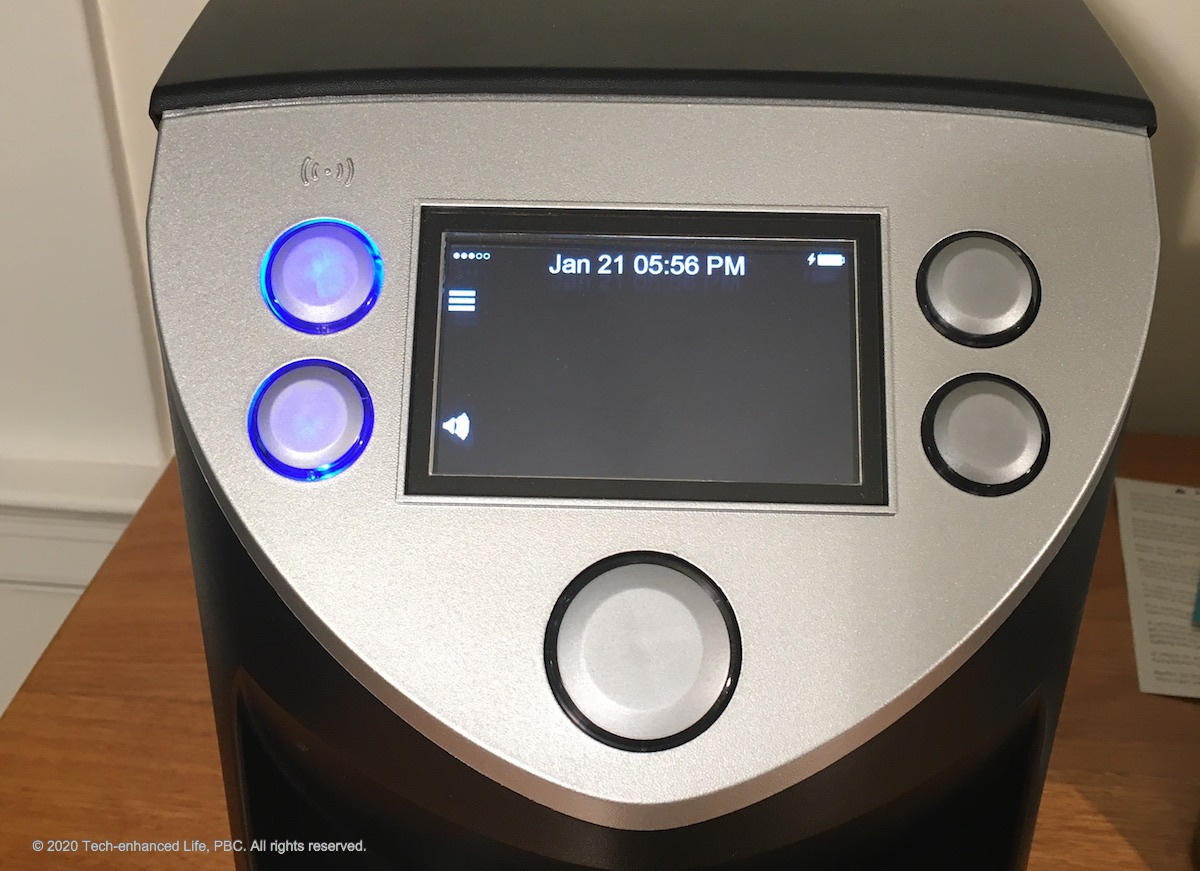
Caption: Livi User Interface
Programming Medication Schedule
The first step in using this product after setting it up is to enter in the specific medications, and the medication schedule that the Dispensee needs. In our simple initial testing, for example, we chose three different medications to be administered each day at 8.00am. In later testing, we set up a much more complex schedule involving 10 different medications to be delivered in different groups at different times during the day.
You enter this information using the web portal that you access via the Internet. There is no way to enter medications directly from the machine.
We found the data entry process to be straightforward. You can just type things in. There is an internal database with various pills in it that makes data entry a bit simpler.
The extra step required by this product in data entry is a “sizing” of the pill. This is described in more detail below under “filling”, and is a key difference between this product and others in the robot pill organizer category.
Remote medication adjustment
The web portal DOES allow you to adjust medication schedules or doses remotely. Adding a new type of medication, of course requires you to be physically present at the machine so you can add the pills.
Limits on Complexity of Regimen
A big advantage of the robot pill organizer / dispenser products is that they decouple the physical container system from the dosing regimen. Thus, unlike pill boxes and systems modelled on pill boxes, there are relatively few limits as to how many different doses can be delivered in one day.
This product can take up to 15 different “types” of pills. But each pill can be dispensed according to different schedules, and there can be many (up to 24) different “dose times” in a given day.
Filling (Putting Pills into the Device)
In our opinion, how well the product handles the “filling” step is a key differentiator between various pill dispenser systems and smart pill boxes. This in our opinion is a big weakness for the Livi product.
How Filling Happens
You use the user interface on the product itself (buttons to toggle through screen options), which guides you through a simple process.
The first step of the process is choosing the medication to be filled (see User Interface section). Then, you open a large “lid” at the top of the system, and pull out a container that looks rather like a cup or drinking glass. You pour as many pills as you wish, from the bottle in which those pills came from the pharmacy, into the system’s “container”, and then put the container back into the machine (reasonably simple). Then the user interface guides you to move on to repeating the same process for each additional type of medication you wish to put into the system.
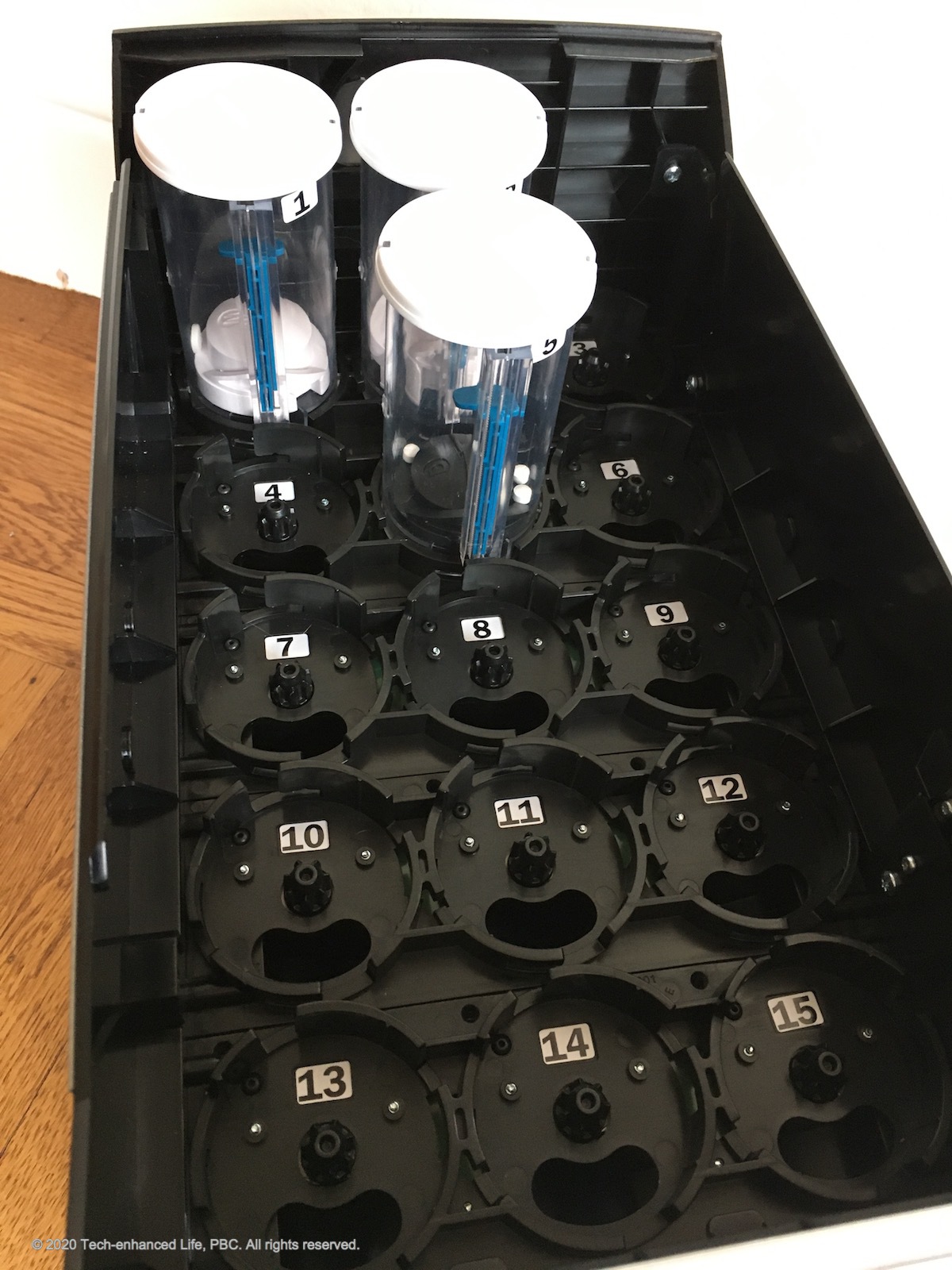
Caption: After you remove the “lid” you see 15 slots for pill “containers”. In this case three pill containers are in the system. To fill each container you take it out, pour in the pills, and reinsert the container into its location.
Assembling the Pill Container
The weakness of the Livi (in our opinion) is that the “container” into which you pour the pills, needs to be assembled (by you), as described below. We found this cumbersome and error prone.
You need to hand build each pill container from two large boxes of parts that come with the product. And each container uses a different set of parts which depend on the exact pill you are going to put in the container.
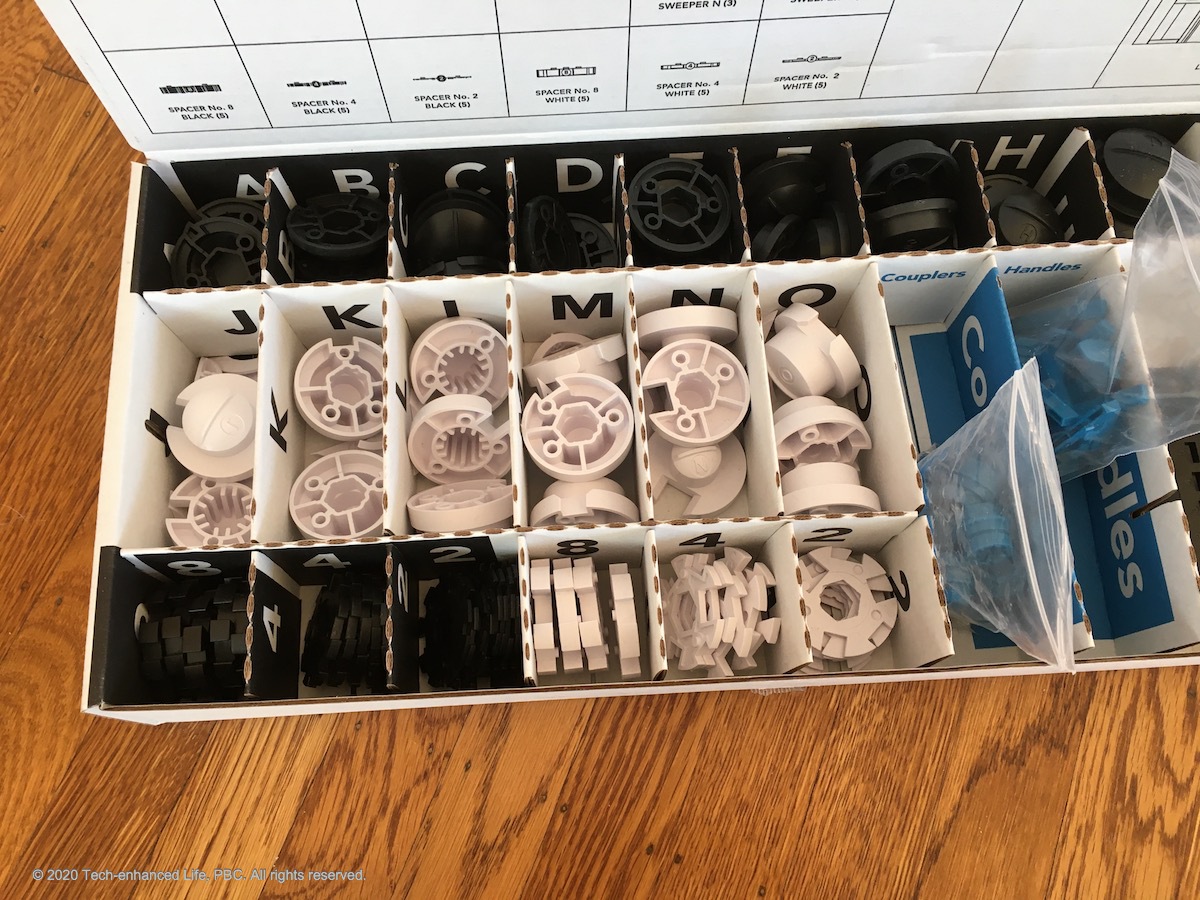
Caption: parts from which you assemble system “containers” for each pill type you use.
So, the filling process for the Livi involves: first measuring the pill; second using a sizing chart to decide which set of 5-7 parts you need to assemble; assembling the parts into a container; filling the container and putting it into the machine; running a “test” cycle to check the right number of pills come out — as the correct functioning of the internal mechanism depend on you having correctly chosen and assembled the container parts.
And the bad news? You need to repeat this “custom build” step each time you change a pill type.
We set up three separate medications for the Livi product. We found it slow, and worried a lot about making an error. And for the first one we did, it turned out we used the incorrect set of components — leading to the system dispensing two pills at a time rather than one.
Our bottom line: The Livi was much less easy and convenient to fill than the other two products we evaluated in the “robot pill organizer / dispenser category“, and in our opinion it was much easier to make an error. It was certainly useable. And if there was a noteable advantage to using the Livi it might be worth accepting the additional complexity. But for most situations, we do not see a benefit that outweighs the additional time and effort — especially as it happens every time you set up a new type of pill, rather than just when setting up the system for the first time.
Capacity
The product can handle as many as fifteen different types of medications, and the containers are large enough to last for quite a while. For many medication regimens the system can easily hold a month’s worth of pills, meaning filling could be once a month. The Livi holds the largest number of pills of the products in the “robot pill organizer / dispenser category“. See Automatic Pill Dispensers: Hands-on Evaluations for a chart with “capacity” comparisons between this and the competing products.
In situations where you need a large number of pills each day, as well as a large number of different types of pill, this feature is a strength of this product.
Camera / Barcode Scanner / Medication Database
The Livi has a built in medication database to make data entry easier. However it does not include any way to “scan” the barcodes or QR codes on the pill bottles that come from the pharmacy to help with that data entry.
Dispensing: The Interface for the Dispensee (person taking the pills)
The primary interface you see on the product is a screen and five large physical “buttons” (see image further up page).
When it is time for the system to dispense pills, the interface alerts you with lights and noises, and you press the big center button to “dispense”. The pills then drop down into the container at the bottom of the machine.
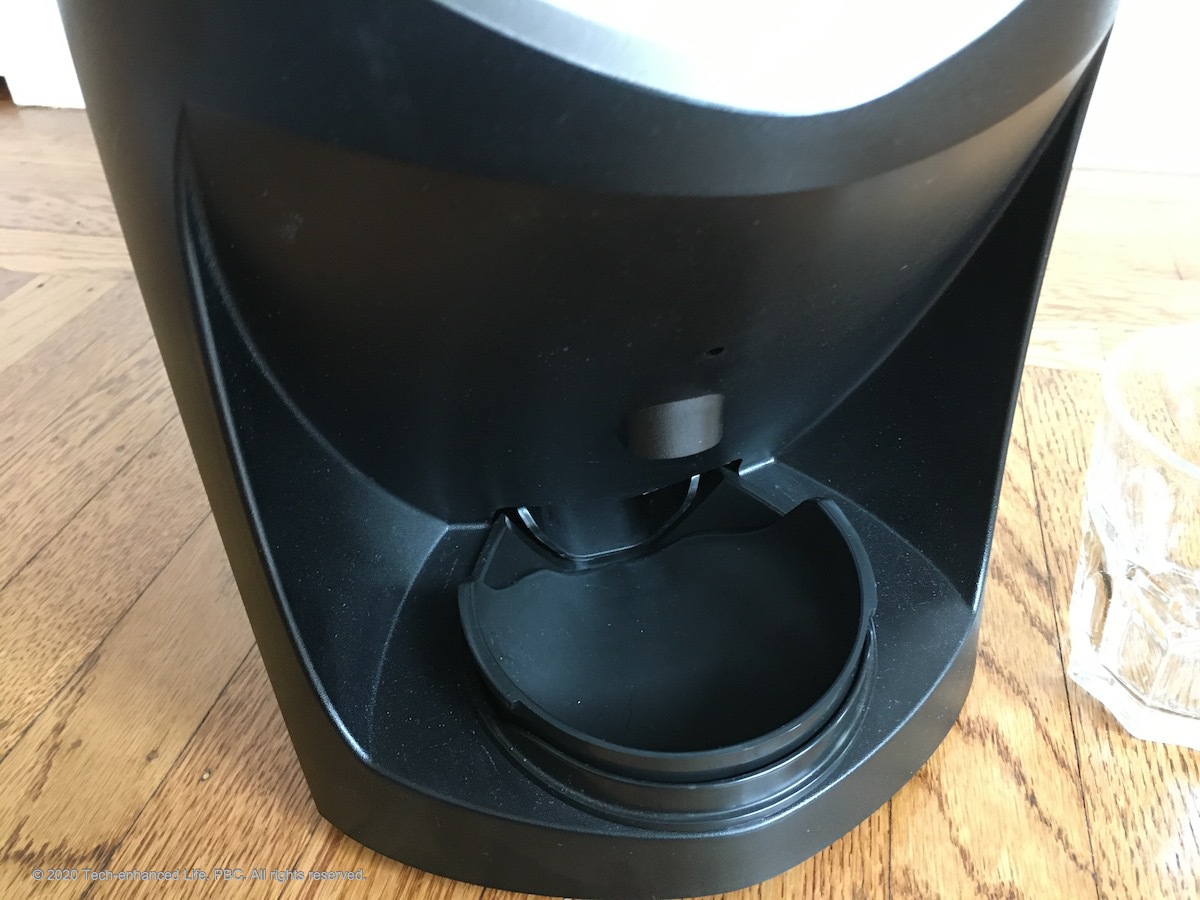
Caption: Pills drop down into the shallow “cup” at the bottom of the Livi system.
How it Communicates: Voice, Beeps, Lights etc
The system beeps and flashes when it is time for a dose, and it can send a variety of notifications (text and email). As best we can discover it does not let you record audio messages, such as “take your medications now”. Nor does it seem to allow notifications and reminders in the form of phone calls.
Early / Late / Missed Doses / Flexibility
It has some flexibility in terms of missed, late and early doses, and claims to allow you to dispense several weeks worth of medications for a “travel pack”. We did not explore these capabilities in depth.
The Right Pills at the Right Time.
This product takes on multiple tasks, all of great importance to taking the right medications at the right time.
By design, it eliminates the step in which you painstakingly sort the pills into individual compartments according to when they need to be delivered. Instead, the internal mechanism of the robot picks up and dispenses individual pills from its internal bulk pill containers, as required by the entered medication schedule.
Once it has been filled and programmed, it:
- dispenses the right pills at the right time;
- alerts the dispensee that it is time to take the pills;
- notifies the filler / caregiver if something goes wrong, either with its own dosing, or if the dispensee does not take their dose out of the machine when they are supposed to.
Separation between Dispensee and Filler Roles
The Livi has a clear separation between the Dispensee and Filler user interface. The dispensee interface, on the system’s screen, is what normally presents itself.
Control of the types of medication, and the schedule, all happen in a “web portal” (not an App). This is separate from the dispensee interface which happens on the machine using a display and buttons to toggle through choices. Access to the pill containers themselves can only happen after you unlock (with a key) the pill compartments, after which the screen opens up a new “filler interface”. So, this product avoids the possibility of a dispensee inadvertently doing things with the pills.
Physical & Cognitive Impairments
Like its competitors in the robot pill organizer dispenser category, this product expects you will be able to read the screen, which in this case has quite small print. This might be challenging for people with limited vision.
The Dispensee requires an ability to read what is on the screen and then take action by way of pressing a button (twice). This is pretty simple, but might present challenges in situations of reduced cognitive ability.
The big issue for this product is filling. We think many caregivers will have trouble with filling, due to the need to hand assemble the pill containers, even if they have “normal” physical and cognitive status.
“Time to Refill”
The product notifies you when supplies are getting low.
Set Up & Connectivity
Connectivity
The Livi system connects to the internet using its own built in cellular connection
The carrier they use is AT&T, and so you need a robust cell signal strength from that carrier in the room where you place the product.
General Setup
Setting the system up for the first time requires turning it on, creating an account on the PharmRight portal and registering “your” product. Then you choose some settings relating to notifications, and it is ready to go. As “setup” routines go, it seemed straightforward.
Portal or App
The portal is clearly capable of handling multiple PharmRight Livi products in the same account — presumably targeting professional caregivers.
The portal allows you to look at a variety of reports, that track things like system status, pills left, adherence, and various other statistics.
Remote medication adjustment
The web portal DOES allow you to adjust medication schedules or doses remotely. Adding a new type of medication, of course requires you to be physically present at the machine so you can add the pills.
Caregiver Monitoring
The product clearly has in mind the scenario of a caregiver or family member who is involved in helping to manage the medications of someone else (an older adult for example). It can send notifications if the dispensee has not taken medication at the right time, or if they took medication from the wrong compartment at the wrong time.
Additional Features & Details
The feature that really sets this product apart are its capacity.
Security & Anti-tampering
Dispensee with Cognitive Impairment
The pill compartments in the system itself are locked by a key. In addition, adjusting medication schedules and refilling all happen via the web portal.
This seems to us as if it should address the situation of a dispensee with cognitive impairment who might get confused as to which compartment to open and when.
However, there are some options you can access via pressing buttons. None of them seem to allow a user to do anything significant to the machine, unless they have an “admin password”. But this might possibly be confusing to a user with cognitive impairment.
“Others” Using your Meds
There is a separate situation which some of the products in this category worry about. That is the situation in which the wrong person takes “your” pills. A topical example is in the case of opioids, for example, where you do not want others with access to the house to be able to take “your” opioids. As best we can see, this product does not really address this situation completely.
Hacking the System
Because it is connected to the Internet, it is theoretically possible someone could hack into and gain control of the system. In our opinion, anything connected to the Internet is potentially hackable, and we would bet this product is no exception. It’s like the decision to use a phone or a computer, or Alexa, or any other piece of useful technology. You make a decision whether the risk of being hacked does or does not outweigh the potential benefits. In this case the potential benefits are significant.
Power & Battery Backup
The system is designed to be plugged in to the power outlet. It includes a battery backup, which the company says lasts for 8 hours.
Vacations & Trips & Leaving the House
We went away for a couple of weeks while using the product. We simply turned it off and left it. When we returned we turned it back on, and it started working again immediately without needing any “set up”.
It would be quite difficult to take the system with you on a trip. It is large and bulky, and definitely not something to go in your suitcase. Furthermore, the internal mechanism is apparently rather delicate and definitely not designed to be “luggable”.
It has some flexibility in terms of missed, late and early doses, and claims to allow you to dispense several weeks worth of medications for a “travel pack”. We did not explore these capabilities in depth.
Aesthetics
This product looks like a personal computer from the 80’s, or perhaps like a modern espresso machine (different people we showed it to had these different views). It has a footprint of 9×20 inches (narrow but deep) and a height of about 12 inches.
It does not scream “I am old and frail”, which is great. The older adults we asked about its appearance were not thrilled about it, but their reaction was “neutral” — which is much better than “horrified”, which is how they often react to products designed for older adults.
Many of the people we have shown this to have commented that this “looks like a Keurig machine”. When we ask if that is a good or a bad thing, opinion is mixed. Some think it looks stylish and thus will be well received. Some worry that for people with dementia, they may mistake it for the coffee machine.
Manual, Support, Training
The product comes with a “User Reference Guide” and a “set up brochure”. They are fairly clear, and in paper form. It also includes some training videos on the web portal.
We found everything pretty straightforward except for setting up the pill containers. We made several errors, even after watching the videos, and needed to schedule a service call to learn what we did wrong.
Languages: Documentation and the interface seem to only come in “English”.
Where to buy it or learn more*: (this takes you away from our website)
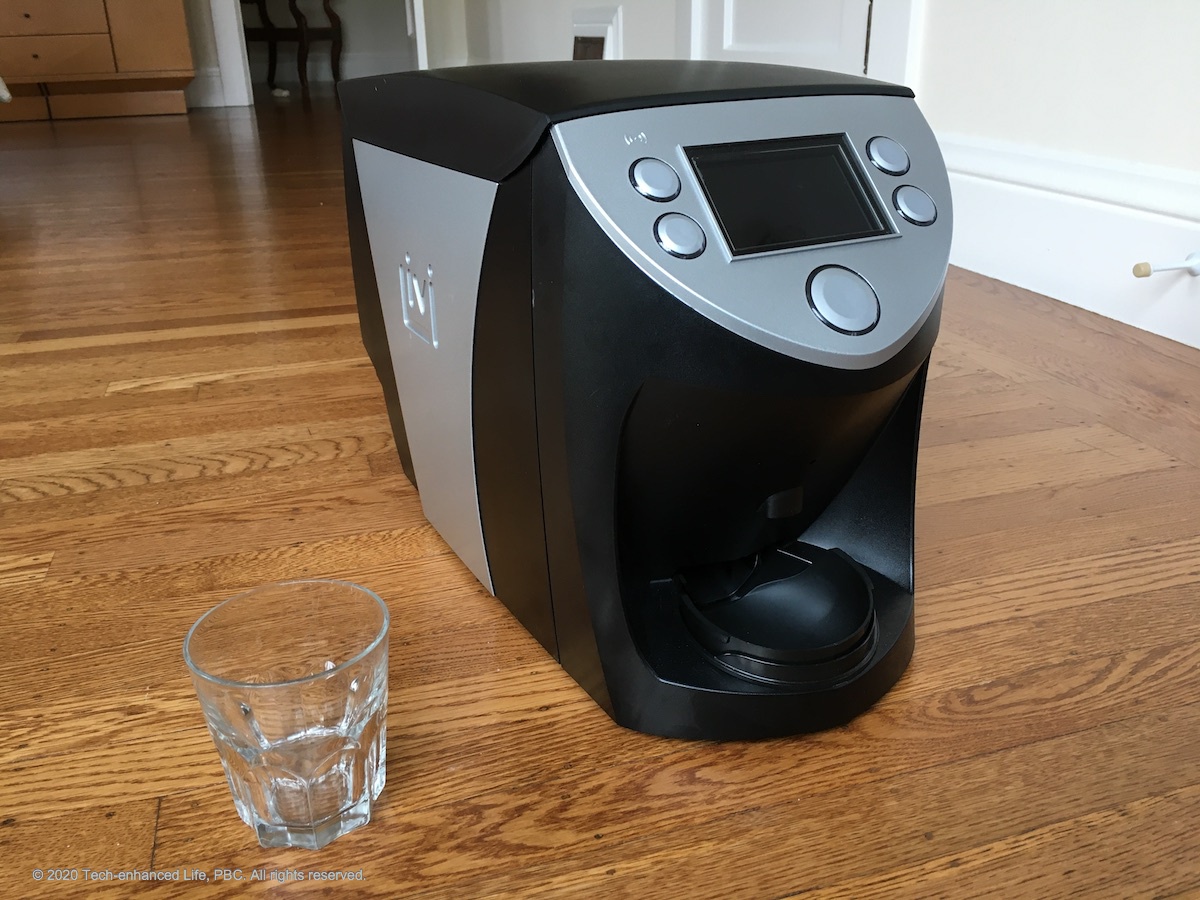
Discount for Tech-enhanced Life readers:
- Discount code:
- Discount amount:
*Disclosure: The research and opinions in this article are those of the author, and may or may not reflect the official views of Tech-enhanced Life.
If you use the links on this website when you buy products we write about, we may earn commissions from qualifying purchases as an Amazon Associate or other affiliate program participant. This does not affect the price you pay. We use the (modest) income to help fund our research.
In some cases, when we evaluate products and services, we ask the vendor to loan us the products we review (so we don’t need to buy them). Beyond the above, Tech-enhanced Life has no financial interest in any products or services discussed here, and this article is not sponsored by the vendor or any third party. See How we Fund our Work.
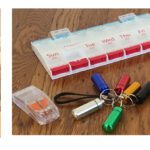
How much it is and how can I
How much it is and how can I get it?
when was this released?
when was this released?